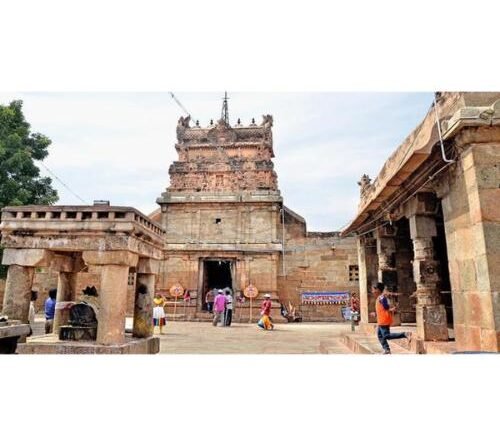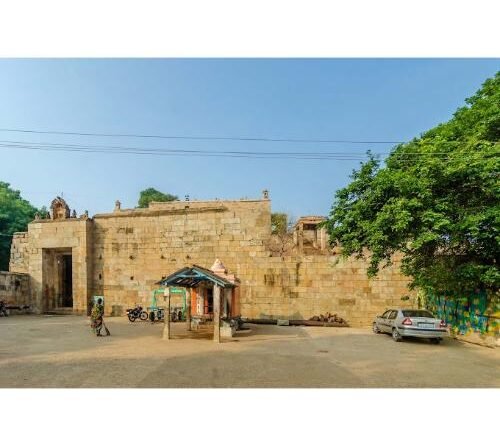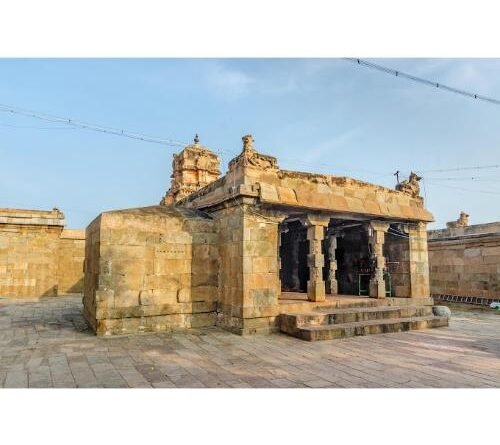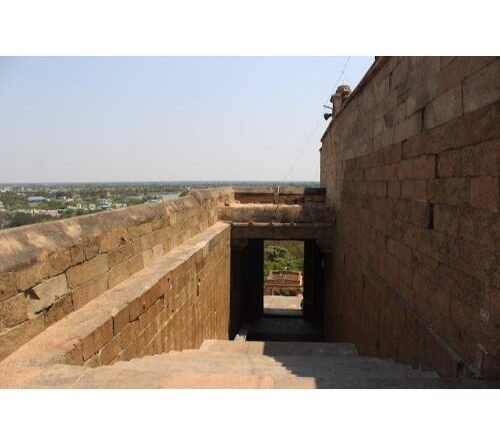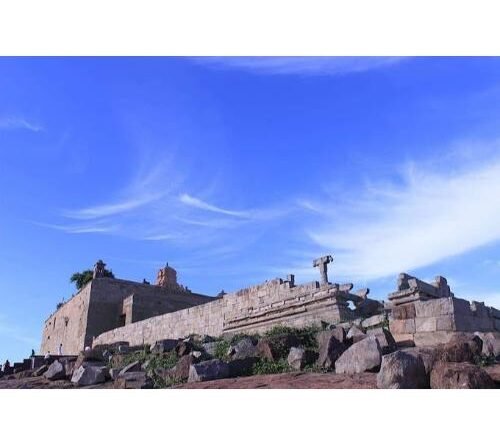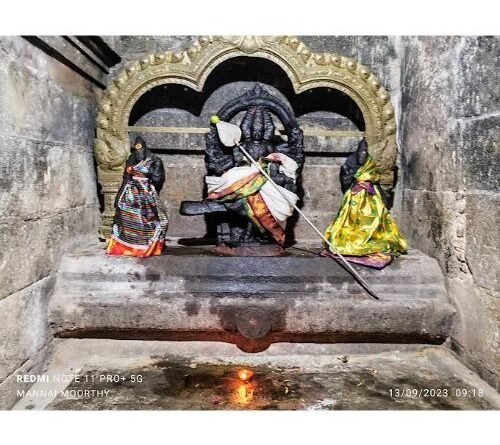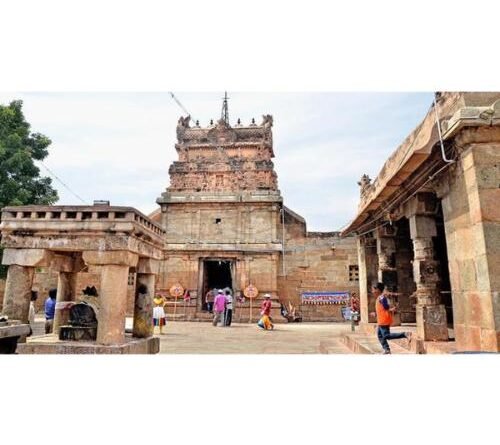Arulmigu Erumbeswara Temple Thiruverumbur,Tamil Nadu
Erumbeeswarar Temple in Thiruverumbur, Tamil Nadu, India, is a Hindu temple dedicated to the deity Shiva. Built on a 60-foot (18 m) tall hill, it is accessible via a flight of steps. The temple’s main shrines and its two prakarams (outer courtyards) are on top of the hill, while a hall and the temple tank are located at the foothills. Shiva is believed to have transformed himself into an ant hill and tilted his head at this place to enable ants to climb up and worship him. Erumbeeswarar is revered in the canonical 7th-century Tamil Saiva work the Tevaram, written by Tamil saint poets known as nayanmars and classified as Paadal Petra Sthalam.
The temple is one in a series built by Aditya Chola (871-907 CE) along the banks of river Cauvery, to commemorate his victory in the Tirupurambiyam Battle. It has several inscriptions from the Chola Empire dating back to the 10th century. The temple has been declared a protected monument by the Archaeological Survey of India and is locally referred as “Kailash of South India”. The temple has six daily rituals at various times from 5:30 am to 8:00 pm, and three yearly festivals in its calendar. The annual Brahmotsavam (prime festival) is attended by thousands of devotees from far and near. Every full moon, tens of thousands of pilgrims worship Erumbeeswarar by circumambulating the hill barefoot in a practice called girivalam. The temple is maintained and administered by the Hindu Religious and Endowment Board of the Government of Tamil Nadu.
History
Erumbeeswarar temple in its current form was built by the Chola king Aditya I (871-907 CE). Aditya won a battle in Tirupurambiyam and to commemorate the victory, he built a series of temples along the banks of the river Cauvery. The temple has 49 inscriptions from the Chola period (850-1280 CE). The inscriptions numbered 101, 104, 105, 127, 130 and 133 of 1914 are believed to be inscribed during the 5th to 7th year of the reign of Aditya and hence believed to be between 882 and 885 CE. Another set of inscriptions from the Sundara Chola (957-970 CE) period indicate gift of land to maintain four signs of Tirupadigam. One another inscription indicates the donation of ten kalanchu (a measure) of gold to the deity by a temple woman in the year 875 CE. A king by name Siruthavur Sembian Veithi Velan from Kiliyurnadu is believed to have constructed the vimana (structure over the sanctum).The temple was the only temple that Malik Kafur (1296-1316 CE) could not conquer in 1311 CE, during his South Indian expedition. The temple is a declared monument of the Archaeological Survey of India on account of the inscriptions in the temple. During the war between British and French during 1752, the temple acted as an infantry for the French troops.In modern times, the temple is maintained and administered by the Hindu Religious and Endowment Board of the Government of Tamil Nadu.










